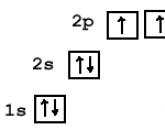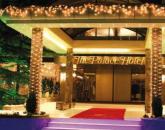The village of the black holunitsa. Black Holunitsa
11) Chernoholunitsky plant - Church of the Intercession, stone, built in 1839; distance from the city of Vyatka in. 133 century, from the county town in 100 ver.; chapel at the parish cemetery, building in 1904; the clerk according to the state is supposed to be: 1 St., 1 day, 1 ps.; apartments for the clergy are state-owned; lands: manor. 1200 p.; fraternal income: St. 640 rubles 62 k., deac. 427 rub. 8 kopecks, ps. 213 p. 54 k., allowance from the factory: priest. 114 r. 28 k., for a horse 102 rubles. 84 k., for servants 8 p. 57 k., rye flour 216 poods, hay 250 p., firewood 20 sazhens, tallow candles 30 f.; deacon 48 p. 28 k., rye flour 120 poods, hay 150 poods, firewood 15 sazhens; psalmist 34 p. 28 k., rye flour 96 p., hay 100 pounds; parishioners: Orthodox Russian 1457 m.p., 1509 f. P. ; the parish consists of one village - a factory.
The plant is located in a low-lying area, near the Chernaya Kholunitsa River (a pond of four versts long), surrounded on all sides by forests (spruce and birch forests). There are two one-class zemstvo schools in the plant - men's and women's. The occupation of factory residents was exclusively work in the mines in autumn and winter and in factories in the spring, and after closing on October 1. 1909 factory workers were left without work; part of the factory residents have moved and are moving to other factories to find work for themselves, but there are no suitable areas of land for agricultural work. Before the closing of the plant, the plant had a factory hospital, and now the county zemstvo maintains a paramedic station with one paramedic and a midwife. Volost. rule Chernokholunitskoye in the factory itself. Steam. adj. in the city of Slobodsky; Art. and. d. Falenki in 70 ver. The plant is on a country road.
11) Chernoholunitsky Zavod - Church of the Intercession, stone, built in 1839; distance from the city of Vyatka in. 133 century, from the county town in 100 faith; at the parish cemetery a chapel, built in 1904; the clerk according to the state is supposed to be: 1 St., 1 day, 1 ps.; apartments for government clerks; lands: manor. 1200 p.; fraternal income: St. 640 rubles 62 k., deac. 427 rub. 8 kopecks, ps. 213 p. 54 k., allowance from the plant: priest. 114 r. 28 k., for a horse 102 rubles. 84 k., for servants 8 p. 57 k., rye flour 216 poods, hay 250 p, firewood 20 sazhens, tallow candles 30 f.; deacon 48 p. 28 k., rye flour 120 pounds, hay 150 pounds, firewood 15 sazhens; psalmist 34 p. 28 k., rye flour 96 p., hay 100 pounds; parishioners: Orthodox Russian 1457 m.p., 1509 f. P. ; the parish consists of one village - a factory.
The plant is located in a low-lying area, near the river Chernaya Kholunitsa (a pond of four miles long), surrounded on all sides by forests (spruce and birch forests). There are two one-class zemstvo schools in the factory - male and female. The occupation of factory residents was exclusively work in the mines in autumn and winter and in factories in the spring, and after closing on October 1. 1909 factory workers were left without work; part of the factory residents have moved and are moving to other factories to find work for themselves, but there are no suitable areas of land for agricultural work. Before the factory was closed, there was a factory hospital in the factory, and now the county zemstvo maintains a paramedic station with one paramedic and a midwife. Volost. rule Chernokholunitskoye in the factory itself. Steam. adj. in the city of Slobodsky; Art. and. d. Falenki in 70 ver. The factory stands on a country road.
On Friday, May 24 at 01.33 a fire broke out in a private residential wooden house in Cherna Kholunitsa on the street. October. The owner of the house, a pensioner, died in the fire.
Close to the house adjoined a wooden plank courtyard. The fire completely destroyed the structure of the house and outbuildings. The fire did not damage neighboring buildings Fire inspectors are investigating the cause of the fire and property damage. Two days earlier in Omutninsk on the street. The tractor caught fire. The driver's cab was burned. The preliminary cause of the fire was a short circuit. There were no casualties as a result of the incident. Fire brigade phone […]
The Chernoholunitsky Museum on the evening of May 18 invited guests to the traditional cultural and educational annual event "Night at the Museum".
The action was held from four o'clock in the afternoon until almost eleven in the evening. The program includes various interesting creative and educational platforms. Each visitor could choose an event to their liking. Photo: Chernoholunitsky Museum.
The traditional championship "Cool Season" took place this weekend in Chorna Kholunitsa.
About 30 participants gathered on the pond to go fishing and get a small prize for it. Among them are not only adults who came from different cities, but also children. The “Cool season” championship takes place in Chorna Kholunitsa for the seventh time and invariably attracts winter fishing enthusiasts. This time, participants from Slobodsky and Omutninsk came to participate in ice fishing. […]
The square near the House of Culture has become a traditional venue for such events. In the morning, trade began here. And then the theatrical performance "The Tale of How fairy-tale heroes Spring was rescued from captivity. After it, the holiday continued with sports competitions "Our Heroic Strength". They competed in lifting weights, throwing a block of wood, throwing brooms, felt boots, and also competed in […]
Chernoholunitsky plant (Black Holunitsa). Church of the Intercession is stone, built in 1839, at a distance from the city of Vyatka. 133 versts, from the county town 100 ver. The parish cemetery has a chapel built in 1904.
The clergy according to the state is supposed to be: 1 priest, 1 deacon, 1 psalmist; apartments for the clergy are state-owned. Land: manor 1200 fathoms. Fraternal cash income: priest 640 rubles. 62 kopecks, deacon 427 rubles. 8 kopecks, psalm reader 213 rubles. 54 kop. Benefit from the factory: 114 rubles to the priest. 28 kopecks, for a horse 102 rubles. 84 kopecks, for servants 8 rubles. 57 kopecks, 216 pounds of rye flour, 250 pounds of hay, 20 fathoms of firewood, 30 pounds of tallow candles; deacon 48 rubles. 28 kopecks, rye flour 120 pounds, hay 150 pounds, firewood 15 sazhens; psalmist 34 rubles. 28 kopecks, rye flour 96 pounds, hay 100 pounds. Parishioners: Orthodox Russians 1457 men. sex, 1509 women. gender; the parish consists of one village - a factory.
The plant is located in a low-lying area near the Chernaya Kholunitsa River (a pond of four versts long), surrounded on all sides by forests (spruce and birch forests). There are two one-class zemstvo schools in the plant - men's and women's. The occupation of factory residents was exclusively work in the mines in autumn and winter and in factories in the spring, and after closing on October 1. 1909 factory workers were left without work. Part of the factory inhabitants have moved and are moving to other factories in order to find work for themselves, but there are no suitable areas of land for agricultural work.
V. I. Shabalin “Vyatka diocese. Historical-geographical and statistical description. Vyatka, 1912.
Black Holuni. The settlement was founded in 1766 in connection with the construction of a metallurgical (cast iron) plant. It was founded by an influential nobleman from St. Petersburg, Prosecutor General Alexander Ivanovich Glebov after purchasing these lands from the treasury. However, the construction of the plant had to be stopped. Residents were engaged in the extraction of ore for the neighboring Klimkovsky plant. In 1769, General A.I. Glebov sold the Kholunitsky factories he had established to the industrialist Savva Yakovlev.
In 1810, according to the Decree of February 18, 1809, Alexander Ivanovich (Sava's grandson) completed the construction of the Chernoholunitsky blast furnace plant and a dam on the river. In those same years, the Church of the Intercession of the Holy Mother of God was built in the village.
In the 40s of the last century, the church was closed, the building was given over to a workers' club, the domes were broken, the bells were removed (according to some reports, one of them was flooded in the Chernokholunitsky pond). The building was rebuilt, increased in size, a dining room was located on the new squares. At present, the building has not been transferred to the church, it houses various institutions: the local history museum, the center social service population, library, savings bank, police station, telephone exchange, post office.
Popular
- Celebration of the day of agriculture and processing industry
- When is Agriculture Day celebrated?
- Card games at the table
- Funny and funny contests for a fun company of adults
- Polish "paratroopers" for the Soviet marines
- Project 205 missile boats
- How is life on the new Chinese destroyer
- The newest frigate "Admiral of the Fleet Kasatonov" is preparing for the first tests and going to sea Ship Admiral Kasatonov
- Submarines of the Gato type
- Insignia on the merchant fleet of the USSR Detachment of the II group




